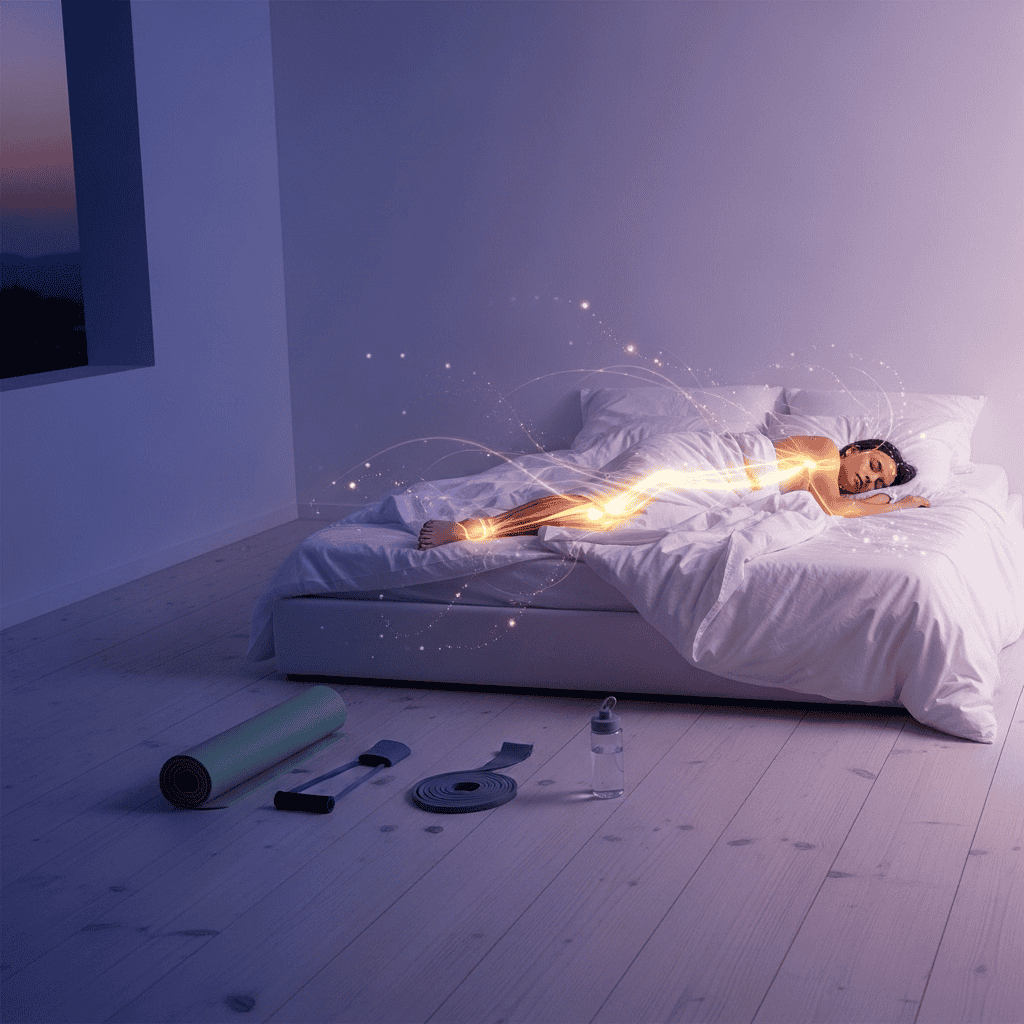
Why Sleep and Recovery Are Crucial for Your Physical Therapy Success
When you think of physical therapy, images of exercises, stretches, and hands-on treatments likely come to mind. But what happens when you leave the clinic? The hours you spend not actively exercising are just as vital to your recovery as your therapy sessions. Sleep and recovery are not merely passive states; they are active, biological processes essential for your body to repair, adapt, and truly benefit from therapeutic interventions. Often underestimated, these components are your secret weapons in achieving optimal rehabilitation outcomes.
Here’s a detailed look at why prioritizing sleep and recovery is non-negotiable for anyone undergoing physical therapy:
The Profound Impact: Why Sleep and Recovery Matter
- Restorative Healing and Muscle Repair: Deep sleep is your body’s prime time for repair. During these crucial hours, growth hormone, essential for tissue repair and muscle growth, is predominantly released. Physical therapy exercises, while beneficial, can cause microscopic tears in your muscles. Adequate sleep allows these muscles to mend, regenerate, and grow stronger, leading to increased strength and flexibility. Without sufficient rest, this regeneration slows, hindering your progress and the effectiveness of your therapy.
- Enhanced Pain Management: Quality sleep significantly reduces your pain sensitivity and improves your pain tolerance. It promotes the production of natural pain-relieving chemicals like endorphins and helps lower cortisol, the stress hormone. Conversely, sleep deprivation can heighten pain perception, making therapy sessions more uncomfortable and challenging. This creates a bidirectional relationship: poor sleep can increase pain, and increased pain can disrupt sleep. Prioritizing rest can break this cycle, facilitating more comfortable and effective engagement in your therapeutic activities.
- Boosted Energy and Motivation: Rehabilitation demands energy, focus, and consistent effort. Sufficient sleep ensures you wake up refreshed and energized, ready to tackle the challenges of physical therapy. Adequate rest maintains energy levels and sustains motivation, which are vital for consistent participation and adherence to your rehabilitation program. Insufficient sleep leads to fatigue, lack of focus, and reduced motivation, hindering progress and prolonging recovery.
- Optimized Cognitive Function and Learning: Recovery involves both physical and mental aspects. Sleep plays a crucial role in cognitive functions such as concentration, memory, and the processing of new information. Optimal sleep enhances your ability to absorb and retain therapy-related knowledge, exercises, and techniques, allowing you to better integrate and apply them during sessions and in your home exercise programs. Sleep deprivation can even interfere with motor skill learning, impacting your ability to master new movements in physical therapy.
- Hormonal Balance and Immune Function: Sleep helps regulate vital hormones, including cortisol. High cortisol levels can hinder your body’s healing ability and increase inflammation. Adequate sleep helps maintain hormonal balance, which supports overall healing. Furthermore, sleep strengthens your immune system, aiding your body in fighting off infections, especially critical after surgery or injury. Poor sleep can impair immune function, slowing recovery and increasing the risk of setbacks.
- Injury Prevention: Rest days between physical therapy sessions are crucial to prevent overloading muscles, joints, and connective tissues, thereby minimizing the risk of overuse injuries or re-injury. These breaks allow your body to heal and adapt to the stresses of therapy, contributing to a more effective and sustainable rehabilitation process. Patients with better sleep health often recover faster and experience less pain, even with the same injury and PT program.
- Emotional and Mental Well-being: Recovering from an injury or chronic pain can be a frustrating and emotionally taxing journey. Consistent, restorative sleep provides emotional and mental relief, fostering a more positive outlook. This positive emotional state can significantly affect your ability to complete sessions, adhere to your home exercise program, and maintain the resilience needed for a successful recovery. Sleep also recharges the mind, leading to greater emotional stability, reduced stress levels, and increased relaxation.
- Support for Neurological Recovery: Sleep is a highly active biological state that undergoes essential processes for neurological recovery, including enhancing memory consolidation and motor learning, which are vital for neuromuscular re-education – the process of retraining your brain and muscles to work together correctly.
Practical Strategies for Improving Sleep and Recovery
Your physical therapist is not just an expert in movement; they can also be a valuable resource in optimizing your sleep and recovery. Here’s how you can work together and make lifestyle adjustments to supercharge your healing:
How Physical Therapy Interventions Can Help:
- Pain Management: Chronic pain is a primary sleep disruptor. Your physical therapist can employ:
- Manual Therapy: Techniques like massage and joint mobilization to reduce muscle tension and pain.
- Targeted Exercises: Strengthening and stretching exercises tailored to your condition to alleviate pain.
- Electrotherapy: Treatments like Transcutaneous Electrical Nerve Stimulation (TENS) for pain relief.
- Deep Tissue Laser Therapy: To reduce inflammation, increase circulation, and relieve pain at a cellular level.
- Optimal Sleep Positioning: Guidance on appropriate sleeping positions to reduce pressure on painful areas and maintain spinal alignment (e.g., pillow between knees for side sleepers, under knees for back sleepers).
- Relaxation Techniques: To calm your mind and body, your therapist can teach:
- Breathing Exercises: Diaphragmatic breathing to reduce stress and promote relaxation.
- Progressive Muscle Relaxation and Guided Imagery: Techniques to ease the transition to sleep.
- Biofeedback and Meditation: Practices to help you control physiological functions and achieve a relaxed state.
- Therapeutic Exercise:
- Regular, Guided Physical Activity: Regular exercise, guided by your physical therapist, can reduce stress and significantly improve sleep quality.
- Gentle Stretching before Bed: Incorporating gentle stretches 30-60 minutes before bedtime can improve flexibility, reduce muscle tension, and prepare your body for sleep. Examples include Cat-Cow stretch, Child’s Pose, Pelvic Tilts, and Spinal Twist Stretch.
- Exercise Timing: While exercise is beneficial, vigorous activity within an hour of bedtime may delay sleep. Morning exercise is often recommended, but your therapist can help tailor an exercise schedule that works best for your sleep patterns.
- Posture Correction: Addressing poor daytime and nighttime posture can prevent and alleviate back and neck pain that often disrupts sleep.
Sleep Hygiene Education and Lifestyle Adjustments:
Beyond direct interventions, your physical therapist will likely educate you on healthy sleep behaviors, often referred to as “sleep hygiene.”
- Maintain a Consistent Sleep Schedule: Go to bed and wake up at the same time every day, even on weekends, to regulate your body’s natural circadian rhythm.
- Optimize Your Sleep Environment: Keep your bedroom cool (ideally 60-67°F or 15-19°C), dark, and quiet. Use blackout curtains, eye masks, or white noise machines to minimize disruptions. Invest in a comfortable mattress and supportive pillows tailored to your individual needs.
- Establish a Relaxing Bedtime Routine: Engage in calming activities 30-60 minutes before bed, such as reading a book, taking a warm bath, or practicing relaxation exercises and gentle stretches. This signals to your body that it’s time to wind down.
- Limit Stimulants and Heavy Meals: Avoid caffeine and nicotine, especially later in the day, as their effects can linger for hours. Limit alcohol consumption, which can interfere with deep sleep despite initially inducing sleepiness. Avoid large, spicy, or heavy meals within 2-3 hours of bedtime to prevent indigestion. Optimize water intake earlier in the day and limit fluids about 2 hours before bed to reduce nighttime bathroom trips.
- Reduce Blue Light Exposure: Turn off all screens (phones, tablets, computers, TVs) at least 30-60 minutes, and ideally 1-2 hours, before bed. The blue light emitted by these devices can suppress melatonin production, a key hormone for sleep.
- Limit Daytime Naps: If naps are necessary, keep them short (around 20 minutes) to avoid disrupting nighttime sleep, or consider meditation as a more efficient way to rest.
- Reserve the Bed for Sleep: Avoid working, eating, or watching television in bed. Associate your bedroom primarily with sleep and intimacy to strengthen that connection.
Physical therapists are equipped to assess overall sleep health, screen for common sleep disorders like insomnia, sleep apnea, and restless legs syndrome, and refer patients to other healthcare providers if specialized sleep disorder treatment is needed.
By integrating these practical strategies and working closely with your physical therapist, you can significantly enhance your sleep quality, leading to faster healing, reduced pain, improved physical performance, and overall better rehabilitation outcomes. Remember, sleep isn’t a luxury; it’s a fundamental part of your recovery.



